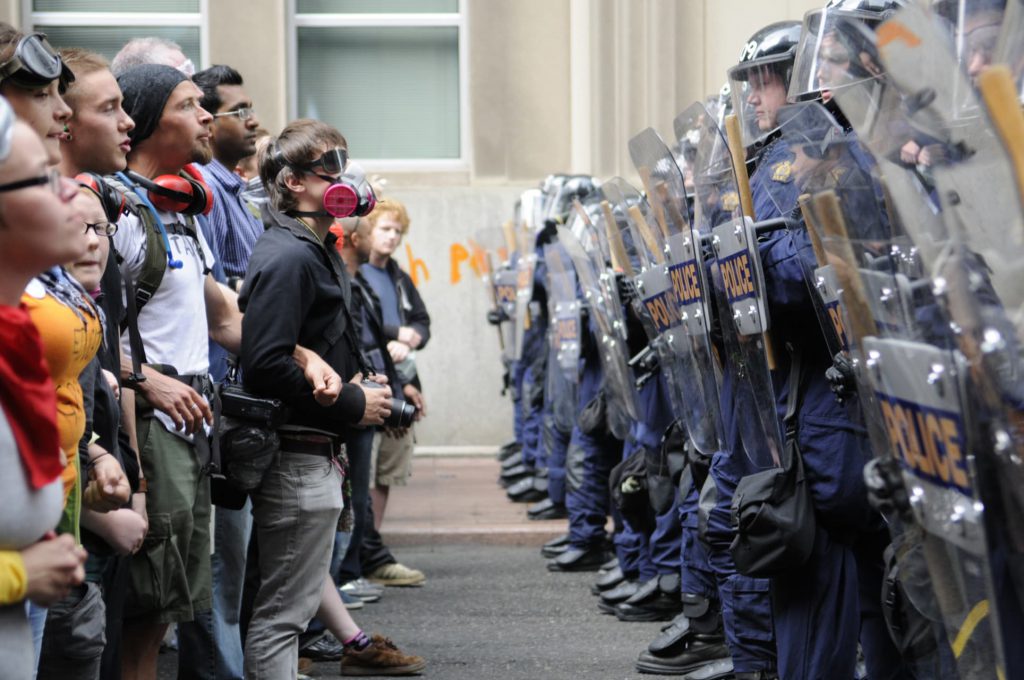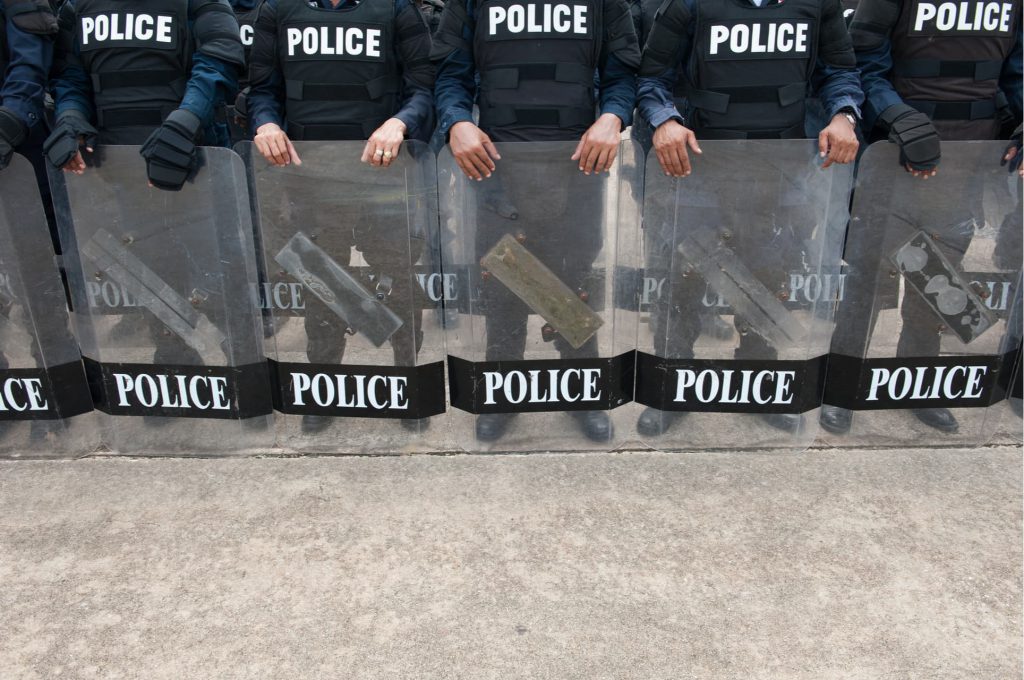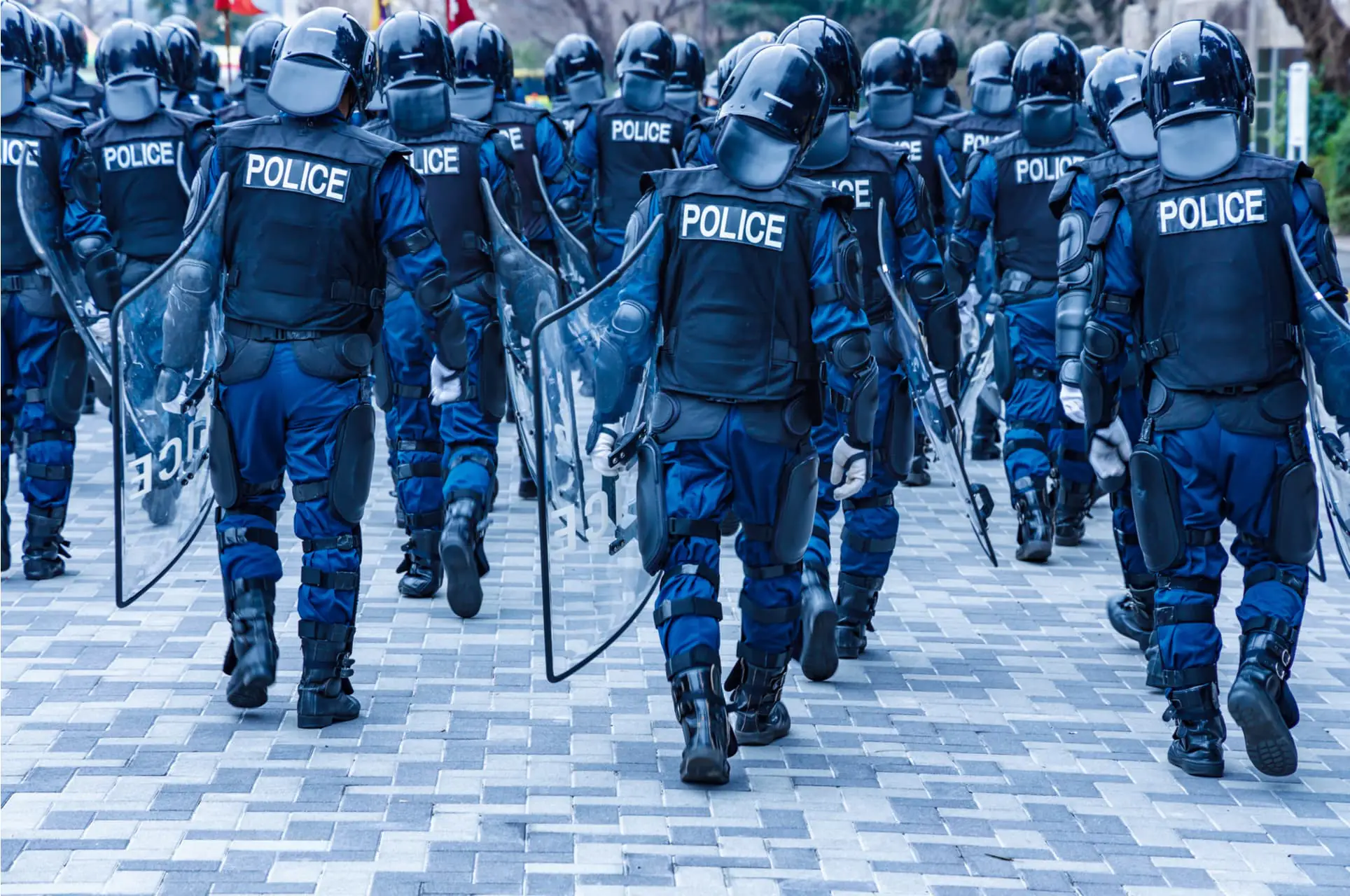In recent months, many news stories have featured riot police standing firm in the face of protests, riots and civil disturbances around the world. These teams are given an unenviable list of responsibilities in what can, at times, seem like complete chaos.
They may be asked to control or disperse crowds, stop criminal behavior, maintain public order or protect property. And at all times they have to prioritize their own safety and that of those around them. It can seem like an impossible task – so how do they manage it?
HISTORICAL TACTICS
Historically the main tactic used by riot police was very similar to that used by the military of the time: the simple charge. Riot police would line up in an impenetrable wall and rush at the crowd in front of them. Ideally, the main effect of this would be psychological, as the sight of an advancing block of police moving as a single unit would be intimidating enough to control large crowds. The hope would be that the mob would turn and run without fighting. Any rioters who chose to stand their ground would be met with riot shields and batons.
Unfortunately, this strategy usually resulted in a high number of casualties on both sides. If the groups were large enough it would be hard for the police to retreat, and injured people tended to get caught in the crush and trampled upon. While baton charge or ‘escalated force’ tactics still exist in certain countries, modern police forces usually prefer alternate options.
In the 1970s, the tactic of ‘negotiated management’ came into favor in the US. This involved police and protesters coming together before the protest to negotiate what they could and couldn’t do. The time and location of marches, which roads would be blocked off and even the number of arrests that would be made would be negotiated.
There are two main downsides to this approach: firstly, it relies on the protesters having a set structure with recognized leaders they will all follow; secondly, the crowd needs to stick to the agreed-upon terms, which cannot be guaranteed. In fact, this approach was largely abandoned in the US after the World Trade Organization protests in Seattle in 1999, when protesters violated the terms of their agreement by smashing windows and blocking streets.
PRESENT-DAY APPROACHES
Modern riot police usually form themselves into a square tactical unit. This unit usually consists of a front echelon that can engage with rioters, a commander in the middle standing beside an arrest team, and another echelon at the back for defense and support. In this formation, the ‘front’ and ‘back’ echelons are interchangeable, so that they are facing the crowd from every angle. The echelons can also move and cover each other if the unit has to perform a maneuver.
The idea of the tactical unit is not to be the impenetrable wall of police used in the past. Instead they offer escape routes to the crowd, hoping that the mob will disperse rather than be forced into conflict with the officers.

An evolution of the ‘escalated force’ tactic is ‘command and control’. This approach was spearheaded by the New York City Police Department and has since been used throughout the US.
It involves breaking up groups of protesters before they can form a single mob that would be far more difficult to control. Police achieve this by physically breaking up large spaces using concrete or metal barriers and then dispersing the smaller, fragmented groups of protesters using nonlethal weapons (more on this below).
Another tactic used for crowd control is ‘envelopment’, also known as ‘kettling’.
This is when the police encircle the crowd in order to contain it. If their numbers are large enough they can do it themselves; for larger groups barriers are often used to control the space. People among the crowd have the option to leave through a gap in the cordon controlled by the police (like a kettle releasing steam: hence the name), or they risk being detained and arrested.
Kettling is a commonly-used modern crowd control tactic and is employed around the world, from the US and Canada to Israel, Australia and countries throughout Europe.
THE GEAR

Riot police are tasked with defending themselves, their teammates, and their surroundings while protecting civilians. For this reason, they tend to use non-lethal weapons wherever possible. Even the simple police baton, still in use today, is a non-lethal alternative to military-style bayonets or sabers, which were once used in these scenarios. Some examples of non-lethal weapons used by riot police around the world include:
CS Gas: more commonly called ‘tear gas’. CS gas was developed secretly by the UK military in the 1950s and is still widely used today. Not actually a gas but rather a liquid aerosol, it can be deployed using a hand-held spray can, fired into crowds using canisters or even loaded into blank pistol cartridges in powder form. CS reacts with moisture on the skin and in the eyes causing a burning sensation, coughing, disorientation, dizziness, and restricted breathing.
Non-lethal Projectiles: before rubber and plastic bullets were developed, riot police would use lower-powered shotgun cartridges and “salt shells” in a bid to reduce the lethality of their weapons. Rubber bullets were developed by the British Ministry of Defence for use in Northern Ireland in the 1970s. They are typically ‘skip fired’, bounced off the ground in the general direction of protesters to further reduce injuries. Still, their use is controversial and many countries either limit their use or have banned them outright. Plastic bullets and beanbag rounds have also been developed as safer alternatives to rubber bullets.
The Long Range Acoustic Device (or LRAD): Also called a ‘sound cannon’, this non-lethal sonic weapon projects sound in a tight beam. High-powered LRAD systems can produce sounds of up to 162 decibels. For reference, an average gunshot is around 140 decibels. LRAD systems have been successfully deployed in the US, Japan, the UK, and throughout Europe.
The Active Denial System, (or ADS): This is a new divide that has not yet been used in the US, despite a request for their use in 2020, which was ultimately denied. The reason? Essentially, the device was considered too scary to use.
The ADS is effectively a heat cannon, firing a beam of microwaves towards a crowd. These microwaves don’t penetrate deeply enough to cause damage but they do cause an intense burning sensation on the skin. This vehicle-mounted system has been requested by the Los Angeles Sheriff’s Department and copycat versions are being developed by both Russia and China. It seems inevitable that we will soon see ADS deployed against rioters or protesters in the near future, if not in the US then internationally.

